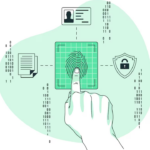Cybersecurity is a rapidly changing landscape, and only companies willing to be ahead of the game will be protected. Organizations need to be proactive and focus on making their active directory (AD) secure, which is the base for user authentication, access management, and administrative controls.
Since AD is a major pillar of enterprise security architecture, it is a target of choice for cybercriminals. According to Microsoft, if hackers gain access to AD, they can access sensitive information and take over entire networks. That’s why prevention is one of the most important areas of focus. Instead of waiting for an incident to take place, businesses must strengthen their defenses way before malicious actors get a chance to break in.
Blocking Access to Critical Areas of Systems
Hackers typically break into corporate networks by taking advantage of lax security settings or by using stolen login credentials. If they manage to get inside, they can travel through the system, obtain greater access and compromise sensitive information.
A proactive security policy will help limit access from unauthorized people. Role-Based Access Control (RBAC) is a simple solution that restricts employee access based on their roles. That means no one can access files or systems in which they have no real business. This lowers the chances that a hacker will put stolen credentials to bad use.
With strict access controls and ongoing permissions management, businesses can keep sensitive data held firmly and reduce security blind spots.
Detecting Threats Early
A cyberattack can remain undetected for weeks or even months, which gives hackers plenty of time to steal data, manipulate accounts, or deploy malware. Without monitoring in real-time, a security team might not notice activity by an unauthorized user until it’s too late.
This is why early detection is so critical. Active Directory monitoring captures login attempts, permission changes, and other security settings that help to identify anomalous behavior. Security teams can intervene in real-time, when, say, an attacker attempts to gain admin-level access or attempt to log in from an isolated environment.
Semperis Active Directory monitoring solutions, for example, send automated alerts, forensic investigation tools, and provide real-time insights on potential threats. Constant monitoring enables companies to detect and mitigate cyberattacks, preventing them from inflicting extensive damage.
Enhanced Identity Protection through Zero Trust Security
The main idea behind Zero Trust is simple yet powerful: never trust anyone by default. All users, devices, and systems should be validated, authenticated, and continuously monitored before getting access to company resources.
It works particularly well at stopping attackers from guessing weak passwords or otherwise using compromised credentials to get into systems. An effective Zero Trust security strategy involves:
- MFA (as an extra layer of protection)
- Authentication to validate the legitimacy of the login
- Dynamic access controls that vary depending on the user’s behavior
Even if a hacker succeeds in stealing login credentials, Zero Trust means they still won’t be able to get in without further verification.
Decreasing the Opportunity for Abuse of Privileged Accounts
Privileged accounts—such as admin accounts—are very powerful, which means they are a primary target for hackers. If a cybercriminal gains access to one, they can bypass security settings, install malware, and take control of the entire network.
To prevent this, companies must track privileged access. This means:
- Implementing rigorous password policies to make it more difficult for attackers to steal credentials
- Regular auditing of privileged accounts to identify aberrant activity
By controlling privileged accounts, businesses protect against hackers misusing high-level access to take down their systems.
Defending Against AD-Targeting Ransomware
Ransomware attacks — which have become common in recent years — often take advantage of Active Directory vulnerabilities to move laterally across entire networks. Cybercriminals hijack credentials, encrypt files and demand large payments to unlock them.
Ransomware has the ability to cripple business operations within minutes if strong security measures aren’t in place. But firms that are proactive can avoid becoming victims.
To protect AD from ransomware, some key approaches include:
- Having the company’s AD configurations backed regularly so that the data could be restored without paying a ransom.
- Election officials can take several steps to ensure election security, including implementing strong authentication controls
- Identifying abnormal behavior for file encryption prior to widespread damage
Properly securing AD protects companies from being held hostage by cybercriminals.
Security Compliance Features
Healthcare, finance, government and similar industries have tight security regulations like HIPAA, GDPR, and NIST. Compliance standards not meeting guidelines can lead to significant fines, legal actions and considerable reputational risk.
Protecting Active Directory with proactive measures ensures that businesses:
- Protect sensitive data
- Manage user access properly
- Avoid data leaks
Reducing Insider Threats
Not all security threats come from outside hackers. Employees, contractors, or partners with access can leak information, either inadvertently or purposefully.
If insider threats aren’t detected, sensitive company data may find its way into the wrong hands. A behavioral monitoring system can help monitor:
- Privilege escalations that were not truly expected
- Unusual data access requests
- Unusual logins from another location
Insider-driven breaches are far less likely to occur at companies that restrict access and monitor high-risk accounts.
Less Room for Human Error with Security Automation
Even with highly trained employees, human error continues to be one of the leading causes of security breaches. Weak passwords, outdated settings, and misconfigured user roles can all present vulnerabilities.
By streamlining security processes (like password policies, access controls, and real-time monitoring), organizations can remove the common errors that hackers are so keen to exploit.
Security automation is also a great way to reduce the number of issues that IT teams face.
The best way to stop breaches before they occur is through a proactive approach to AD security. Businesses can protect their networks by continuously monitoring systems, implementing automation, restricting privileged access, and keeping ahead of inside threats.
Preventative security investment upfront can save businesses costly breaches, downtime, and operational disruptions down the line. The more robust the defenses, the more solid business continuity, protecting data, systems, and business processes from cyberattacks.








